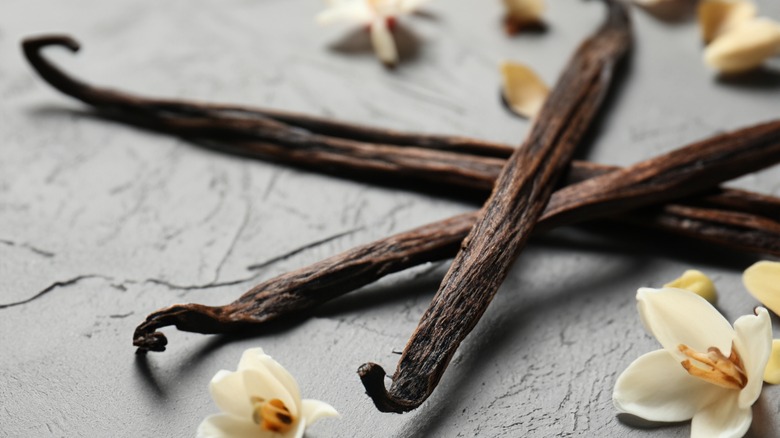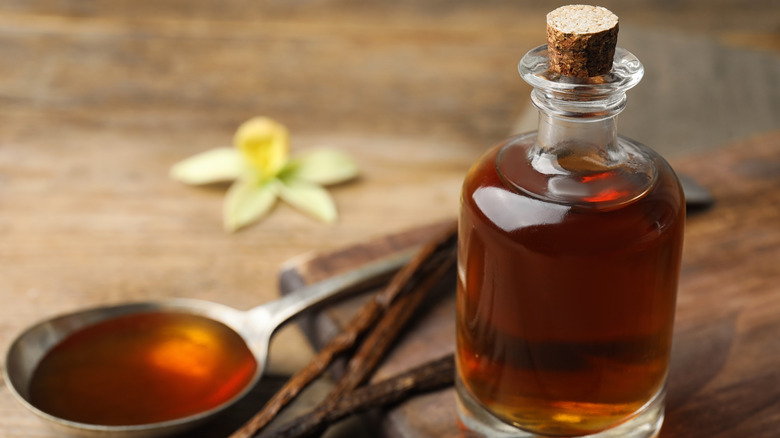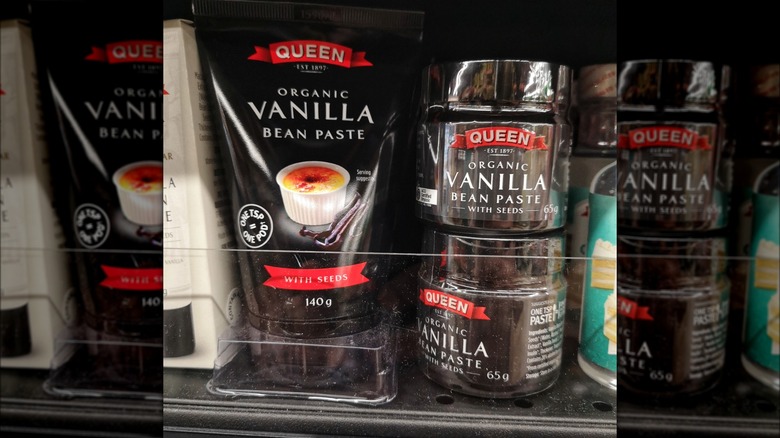What Sets Vanilla Bean Paste Apart From Vanilla Extract?
Whether you are an avid baker or a dabbler simply looking to bake a cake for a special someone, you have probably stood in a grocery store aisle wondering whether to reach for the vanilla bean paste or the vanilla extract. But is there really a difference between the two? And does it matter whether you choose one over the other?
As it turns out, there is. While both products are an ode to the vanilla orchid's intoxicating mix of sweet, creamy aromas and subtle, floral flavor, vanilla bean paste and vanilla extract feature distinct differences in texture, appearance, flavor, production processes, as well as the types of recipes in which they are used.
The extract is essentially a water and alcohol mixture that is infused with vanilla bean yet contains no vanilla bean flecks. It is also more subtle in flavor and thus better suited to simpler recipes. Vanilla bean paste, on the other hand, is made using ground vanilla beans and vanilla powder — thus resulting in a thick, honey-like consistency. It contains speckles of vanilla seeds and has a bit more of a flavor punch; hence, it is often used in recipes that are more complex and require a thicker consistency.
How is vanilla bean paste different from vanilla extract?
Among the more easily noticeable differences between vanilla bean paste and vanilla extract are appearance and texture. There may be slight variations depending on the particular brand, but much like the more chemically processed vanilla essence (aka imitation vanilla), vanilla extract is usually a thin, amber liquid, with no seeds or beans. It is made using vanillin — an organic compound found in cured vanilla bean pods, which is infused with a mixture of water and ethyl alcohol. Once it is ready, the vanilla extract must contain at least 35% alcohol in order to qualify as an extract rather than just a flavor.
However, vanilla bean paste has a thick, sticky consistency, with visible flecks of vanilla bean seeds. These flecks come from vanilla powder, which is dried and ground vanilla bean pods, and then mixed with vanilla extract to create a spreadable paste. Natural binding agents are also added to the mixture to ensure it does not separate. Unlike vanilla extract, vanilla bean paste tends to be more expensive. As such, it is often reserved for more complex recipes.
When to use vanilla bean paste instead of vanilla extract
While most kitchens have vanilla extract as a pantry staple, some baking endeavors are far better suited for vanilla bean paste. Not only does vanilla bean paste have a slightly more intense flavor, but the extract simply cannot offer the visual advantage of seeing those black speckles in your baked goods. As such, vanilla bean paste is more often used in desserts like ice cream, custard, panna cotta, and crème brûlée — all of which are thicker in consistency and benefit from visual oomph.
Yet cookies, cocktails like frozen Southern milk punch, and chocolate desserts often have a more nuanced and complex taste. As such, vanilla extract will enhance such dishes and drinks. However, when vanilla is set to take center stage as the prominent flavor in a particular recipe, vanilla bean paste is a superior addition, much like in a simple vanilla ice cream recipe, or in something like a vanilla bean meltaway cookie. Nevertheless, if you are simply looking to experiment with a different kind of visual component and palate punch in your, say, sugar cookies or oatmeal — vanilla bean paste is without a doubt still a simple enough place to start.



